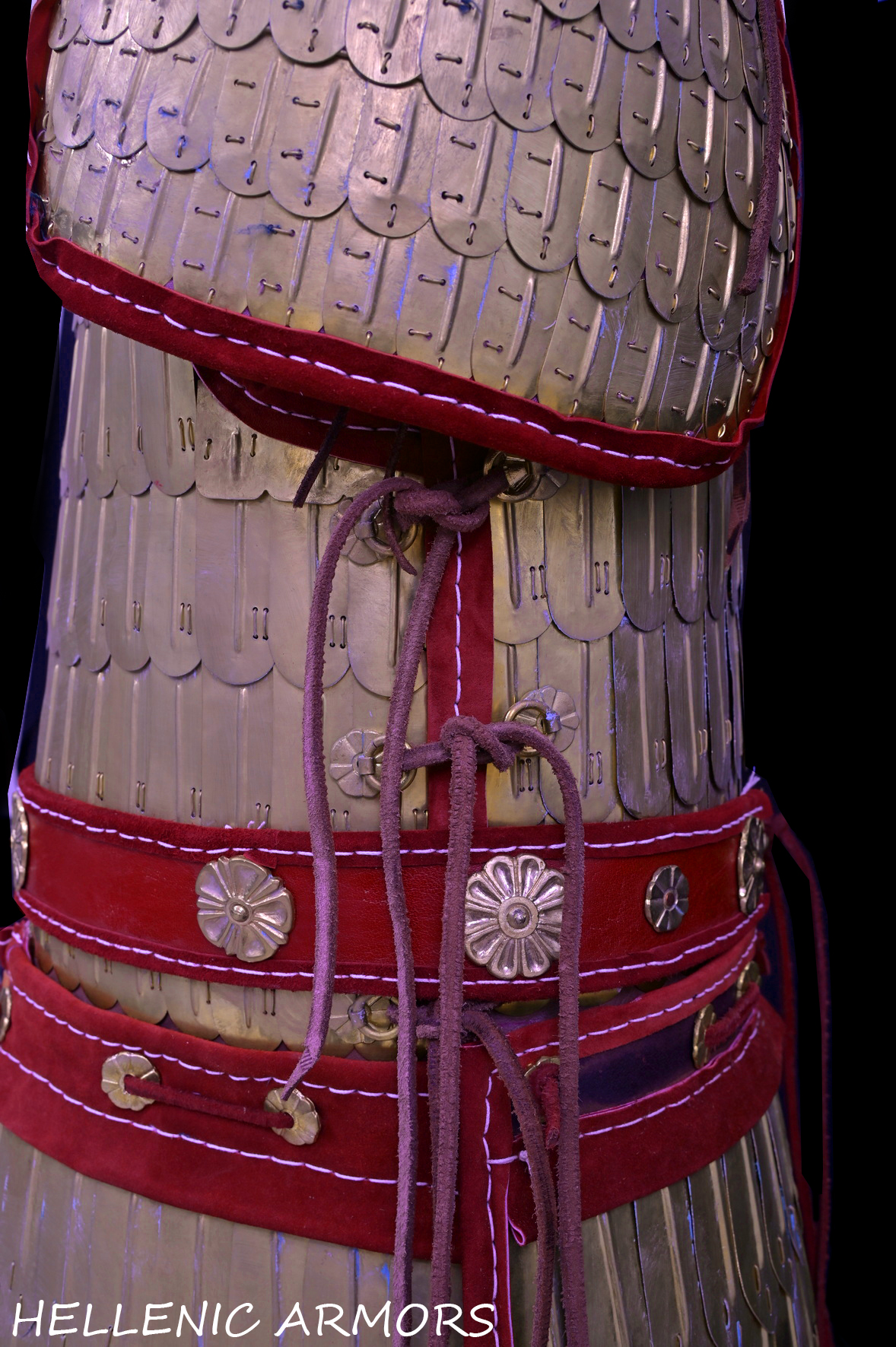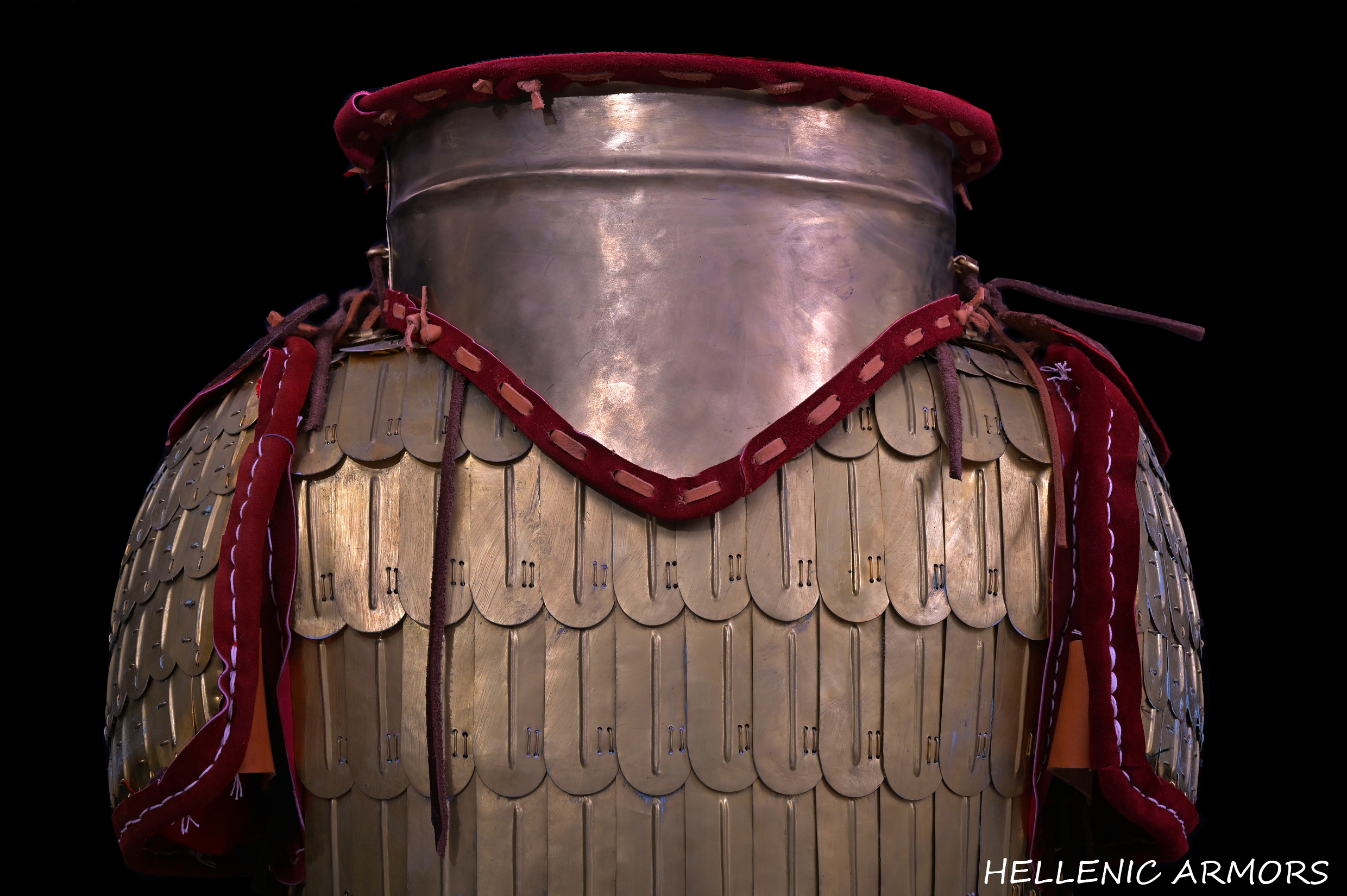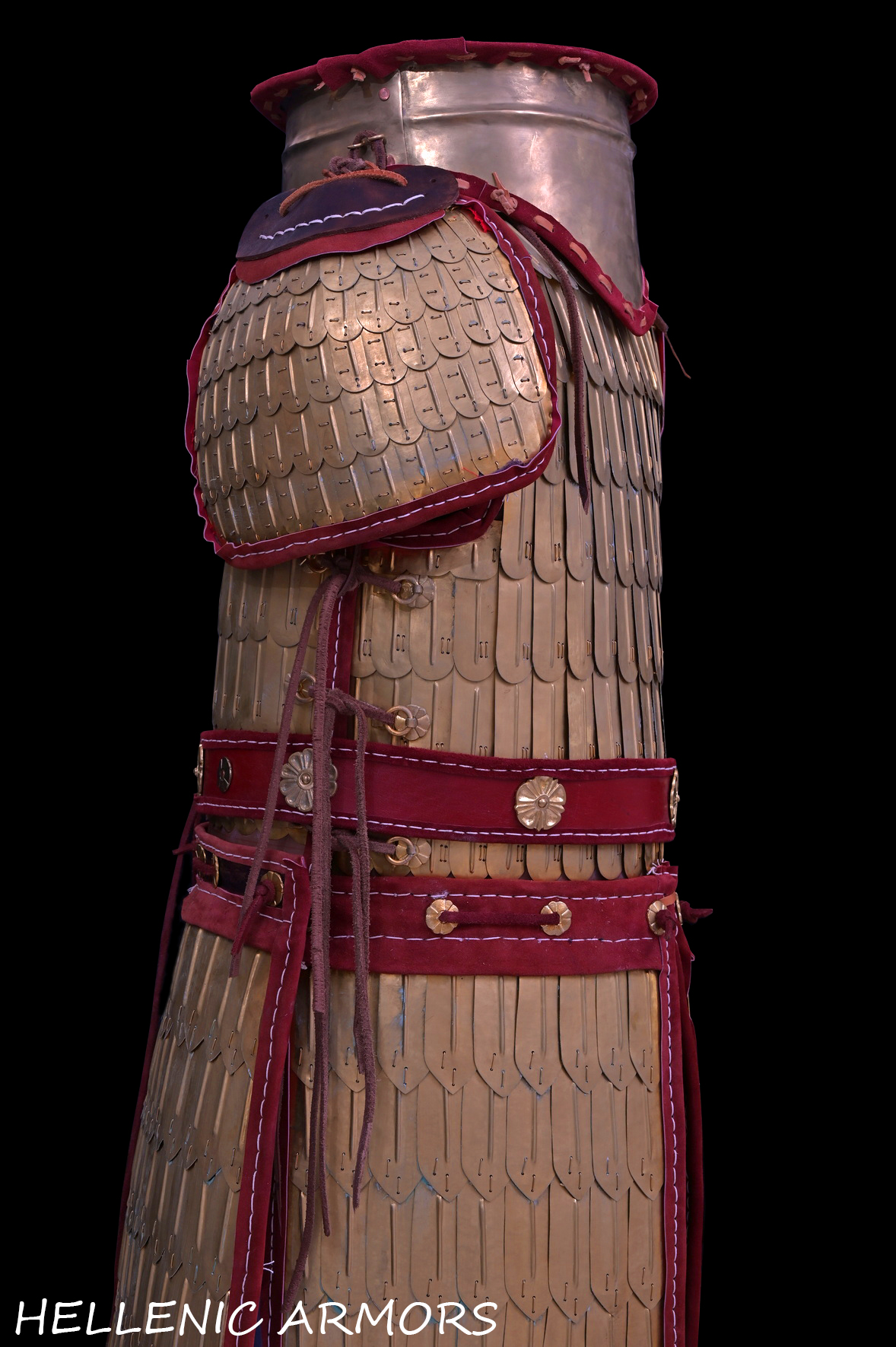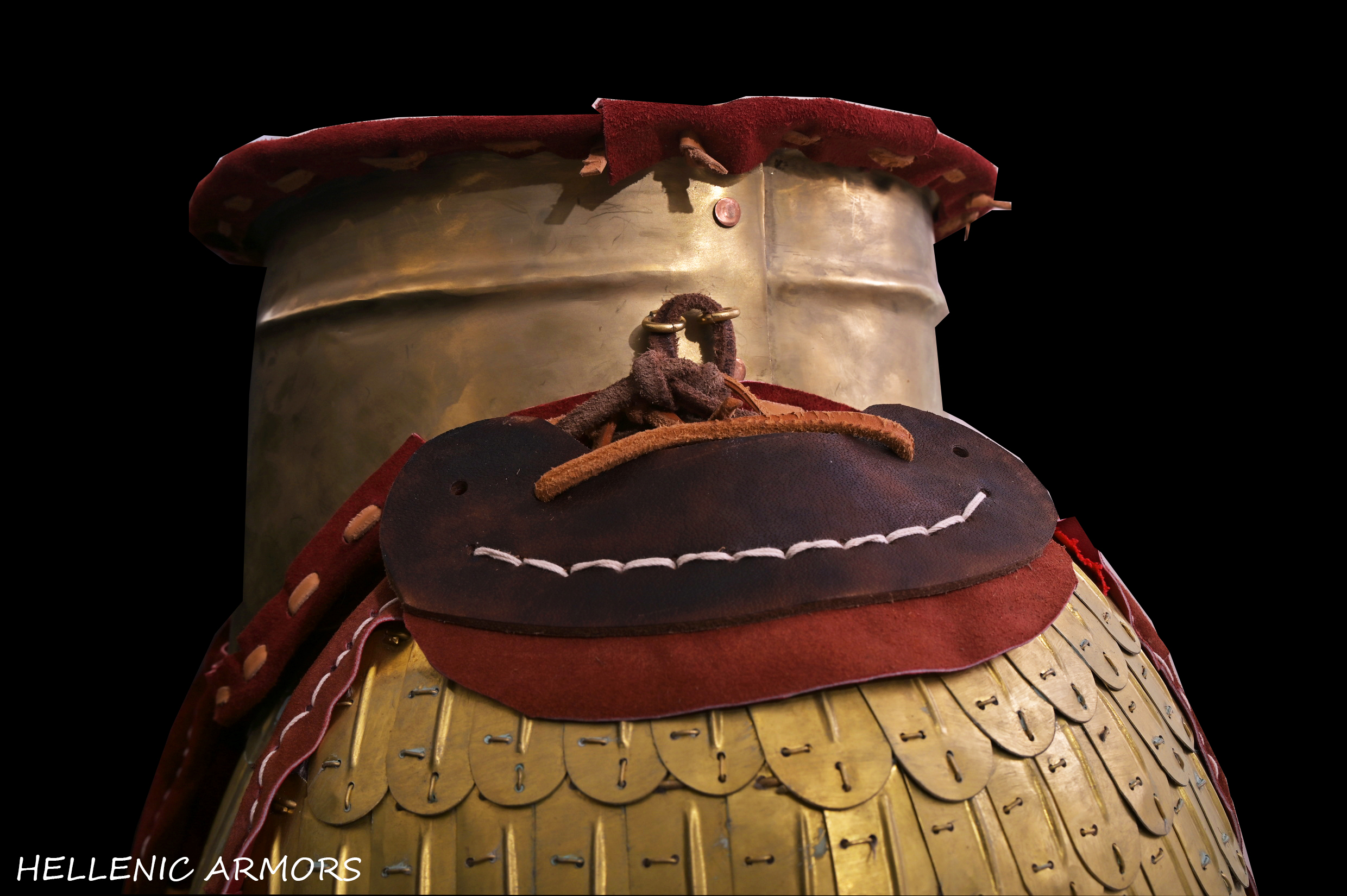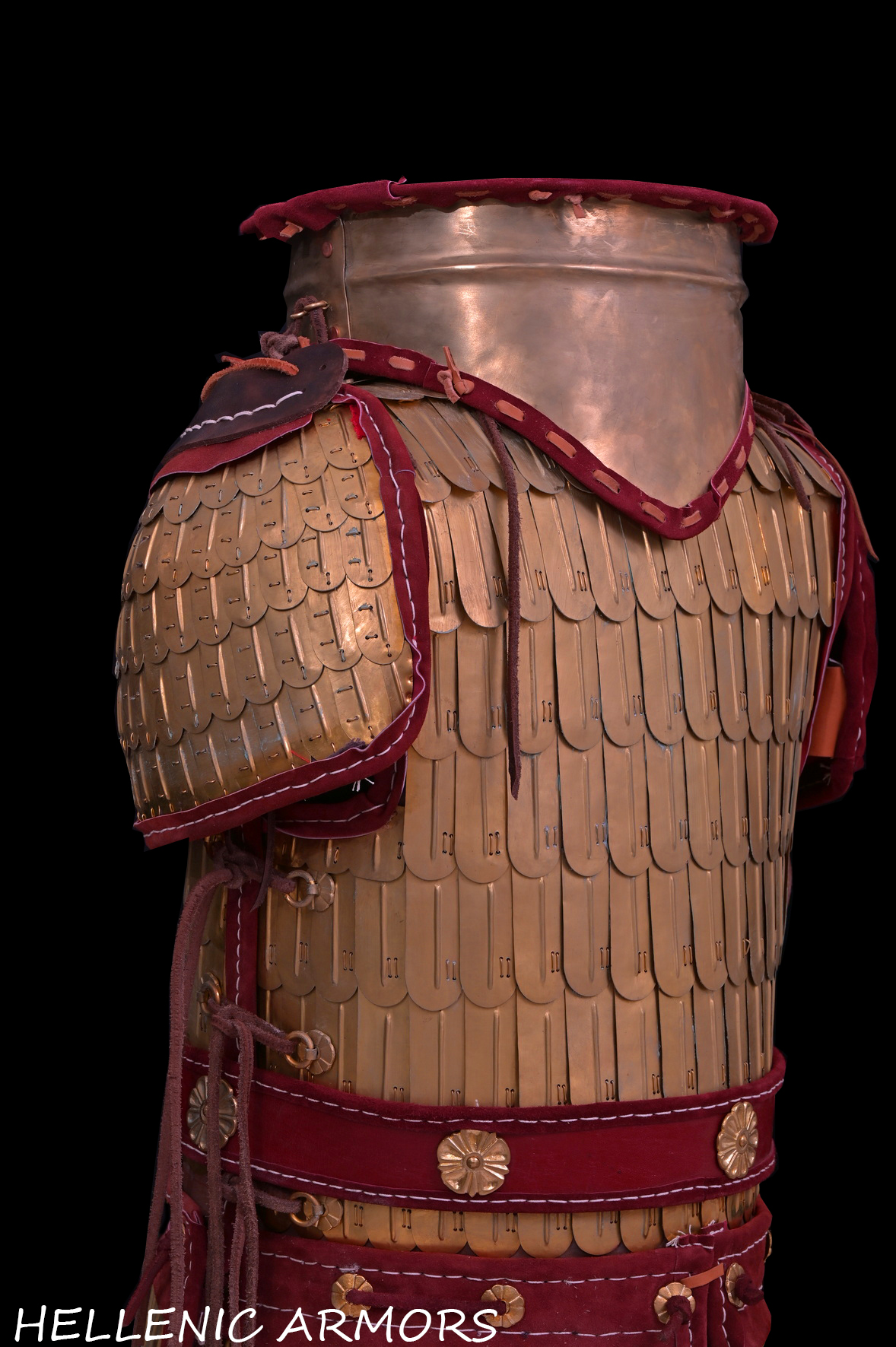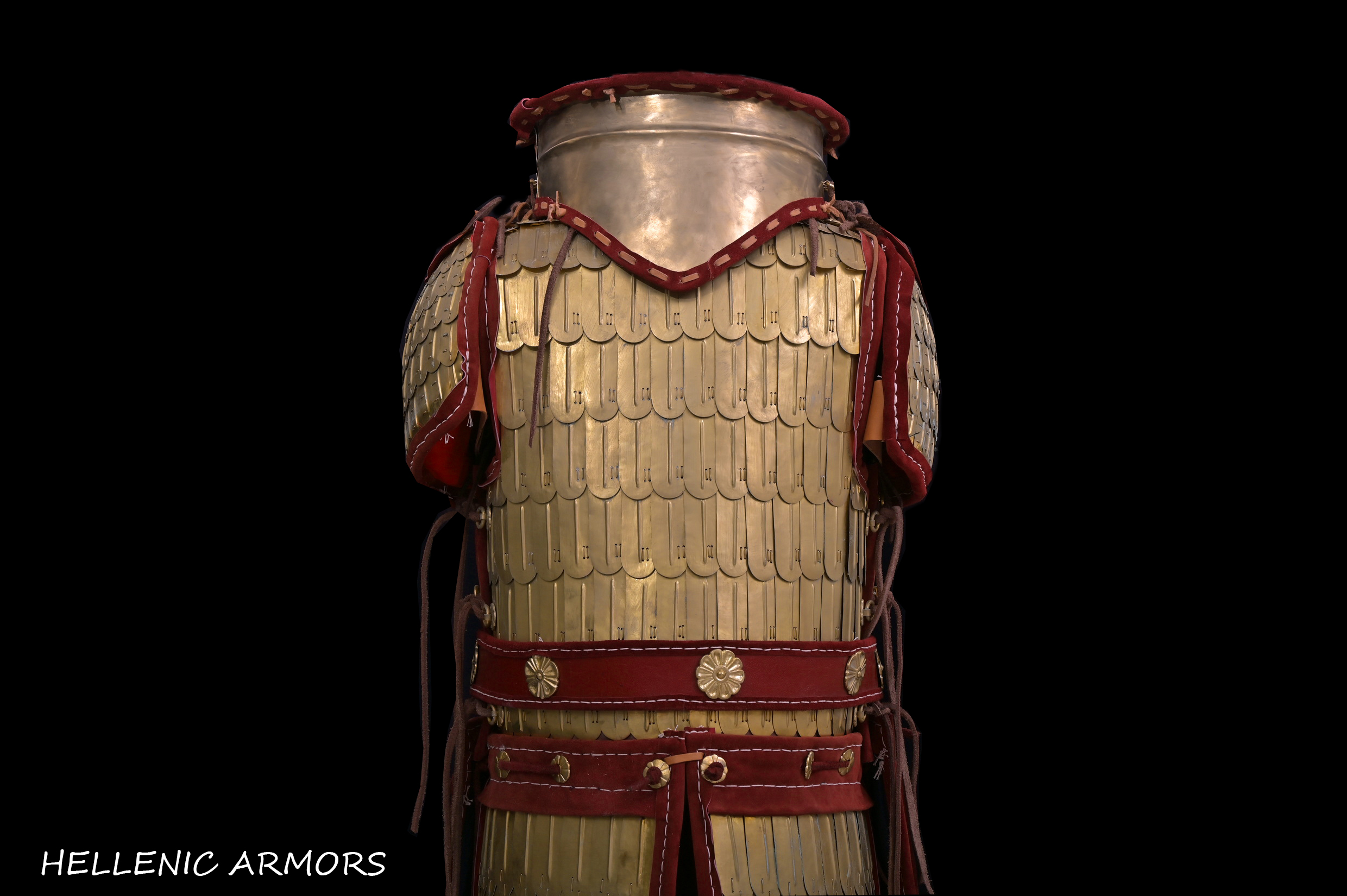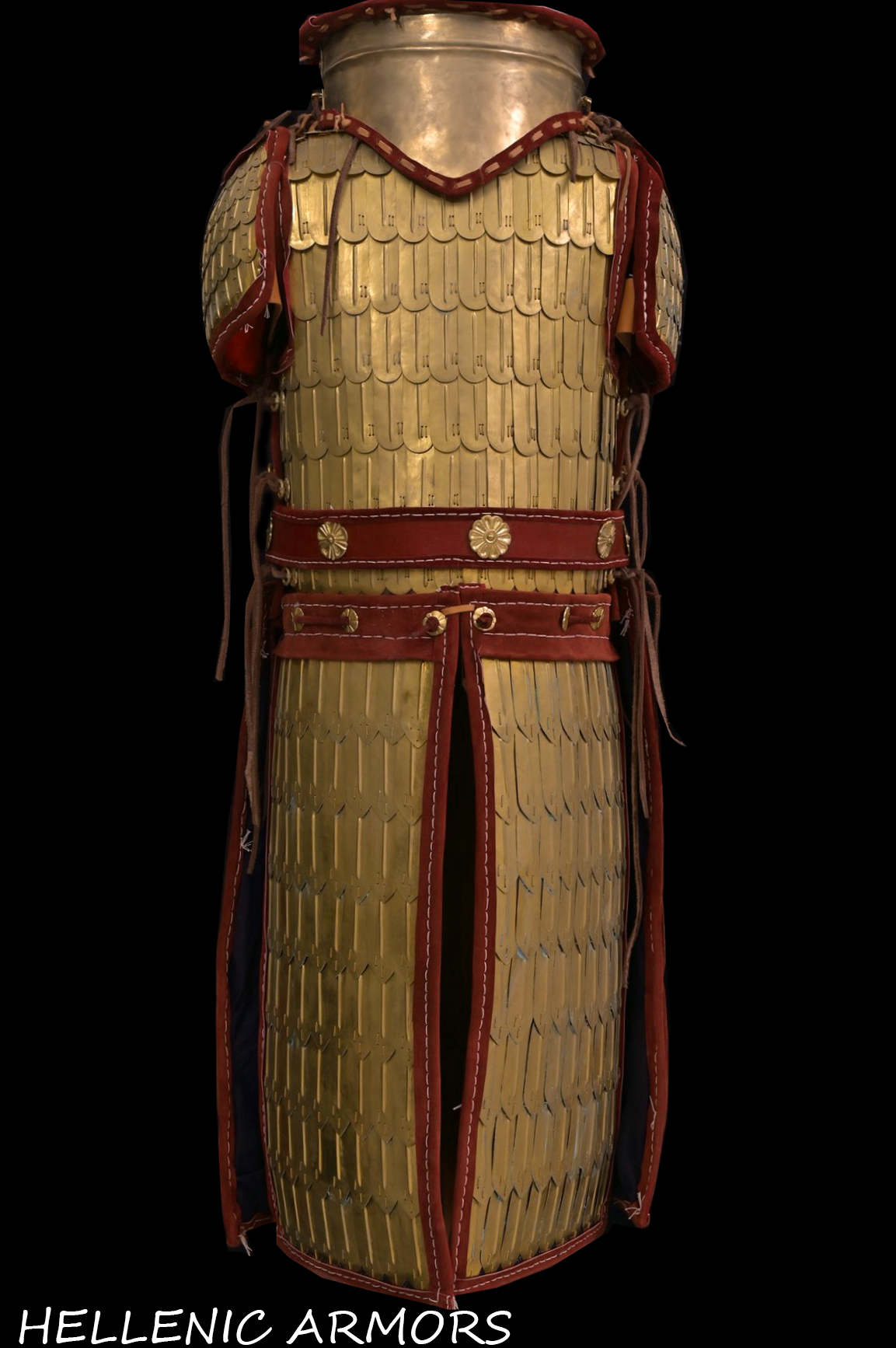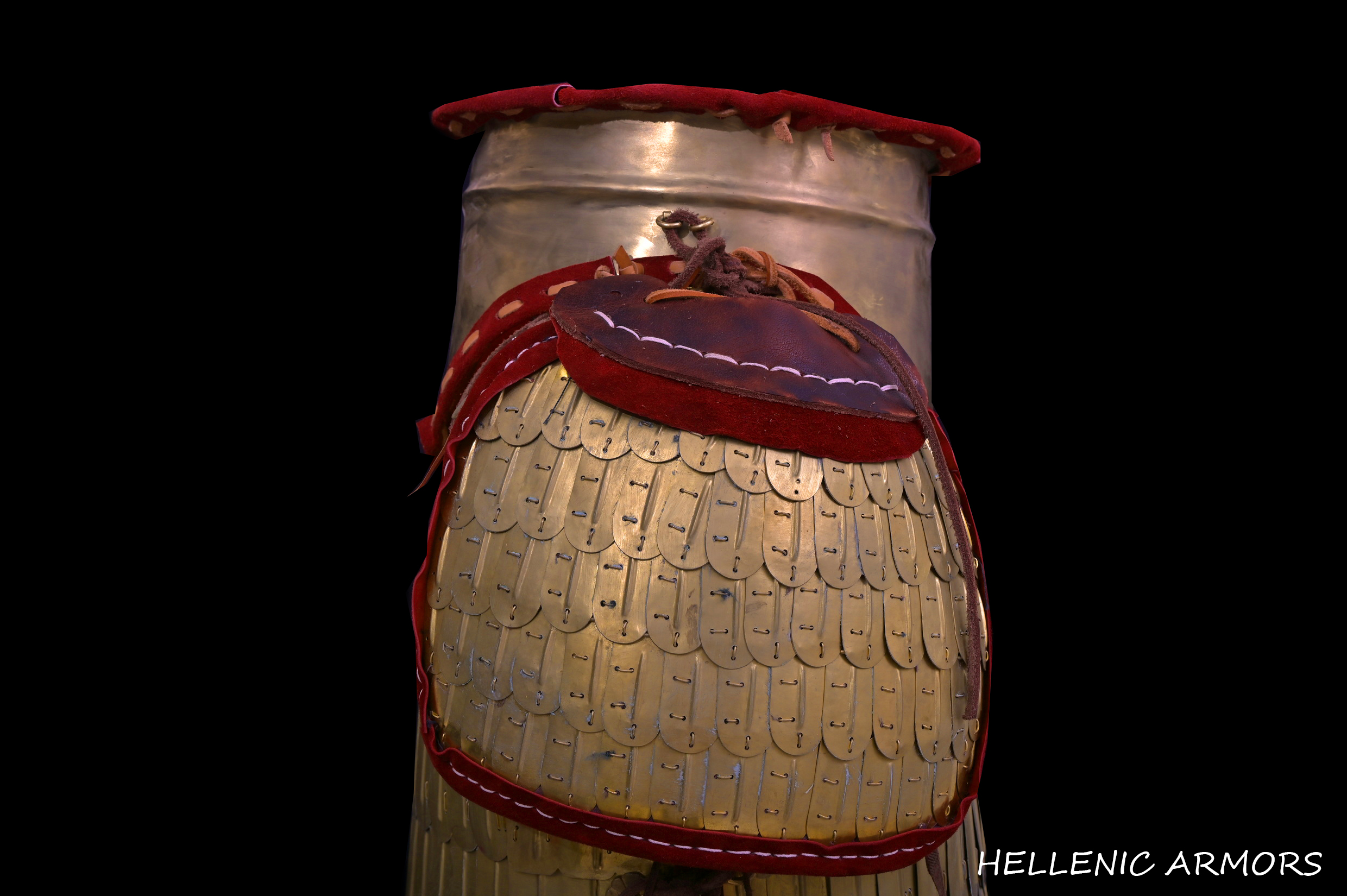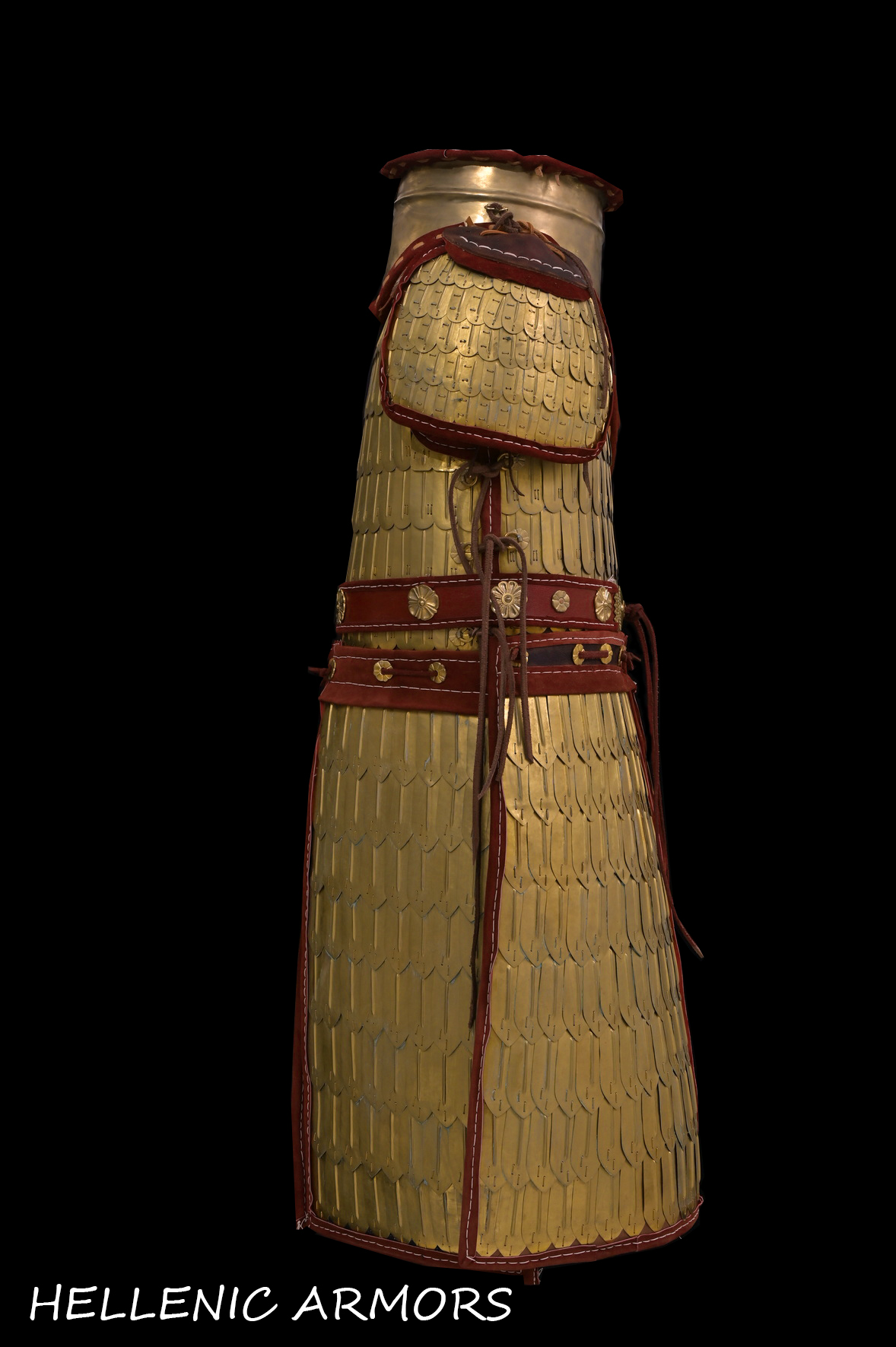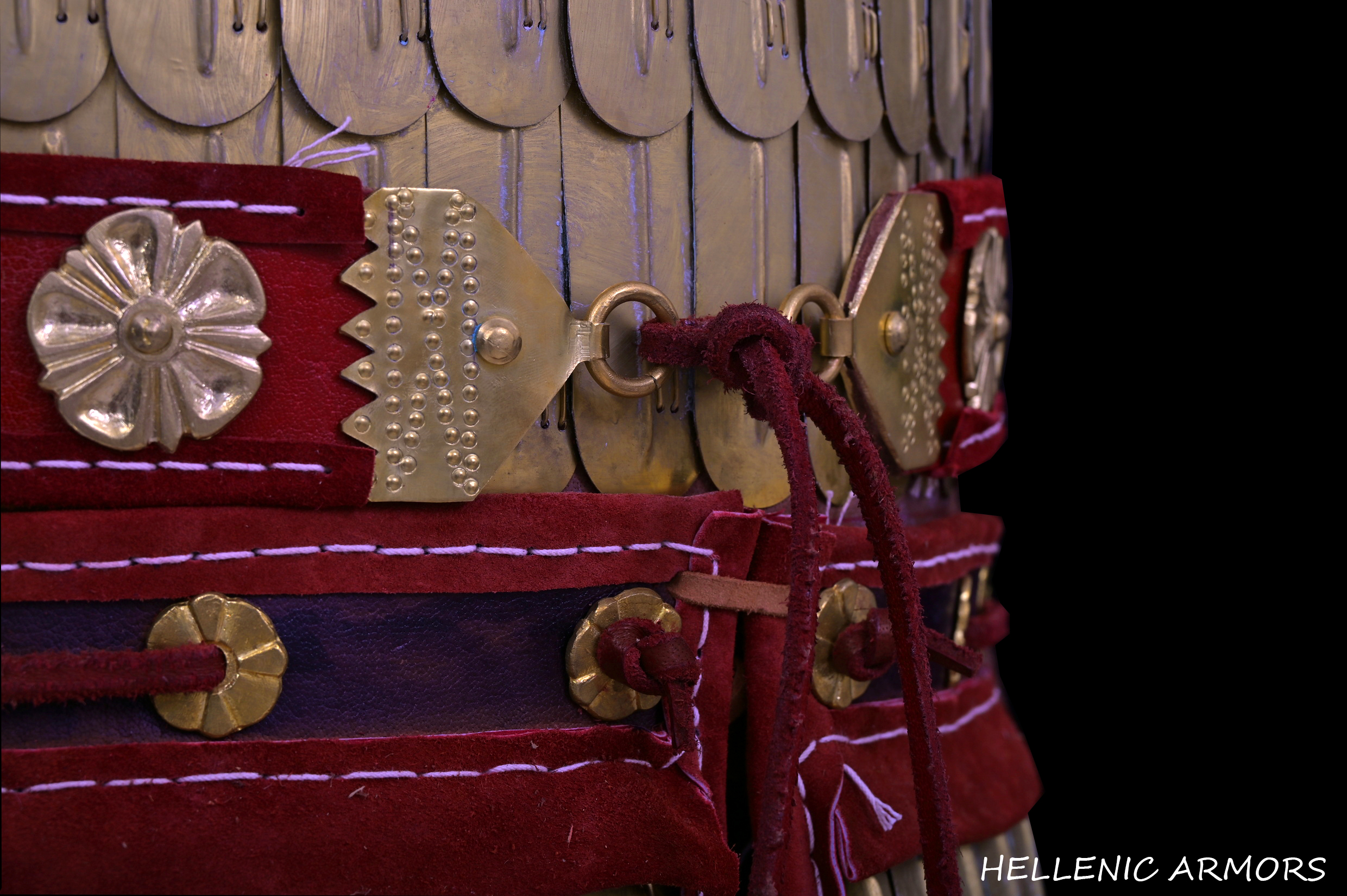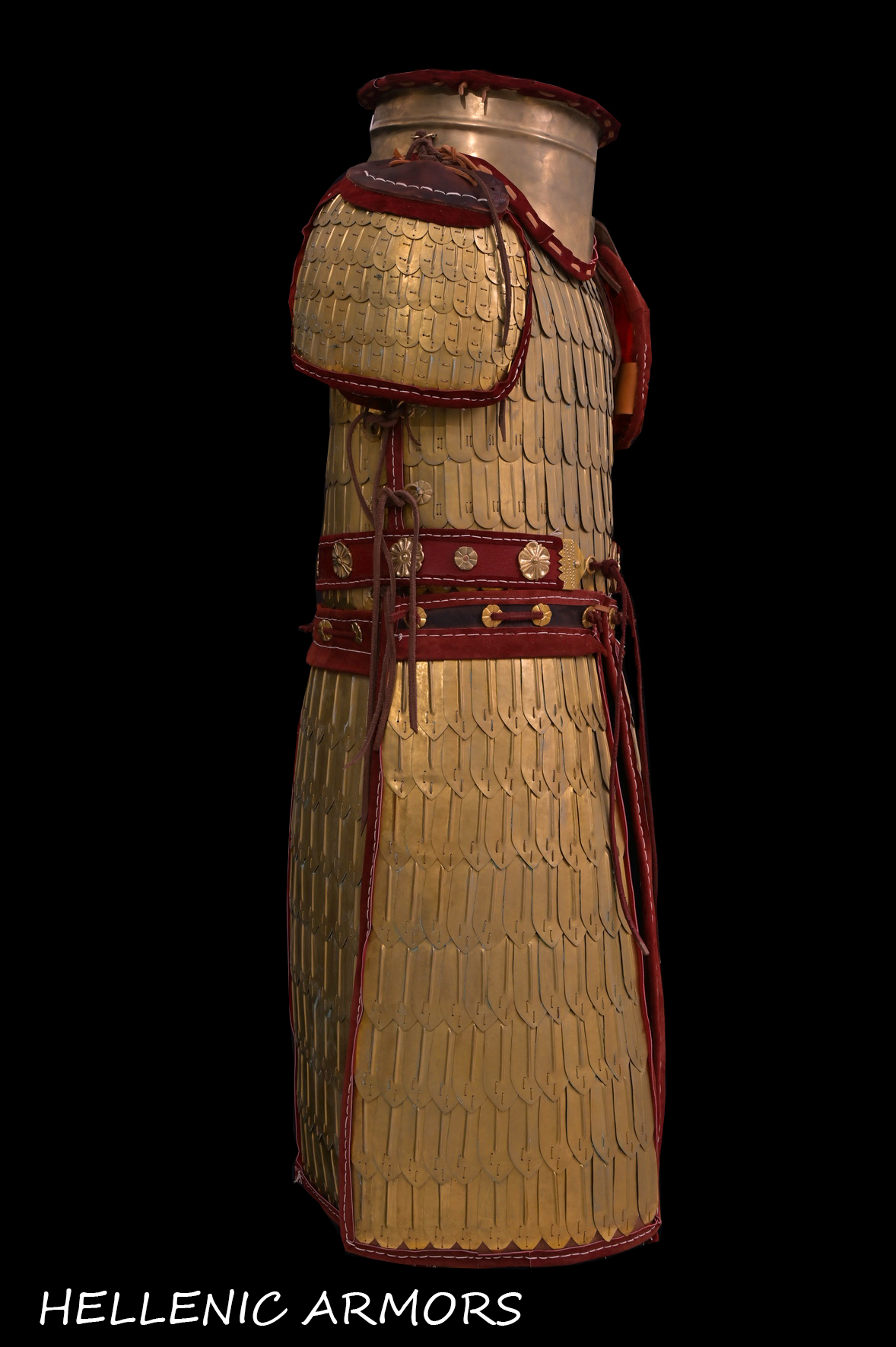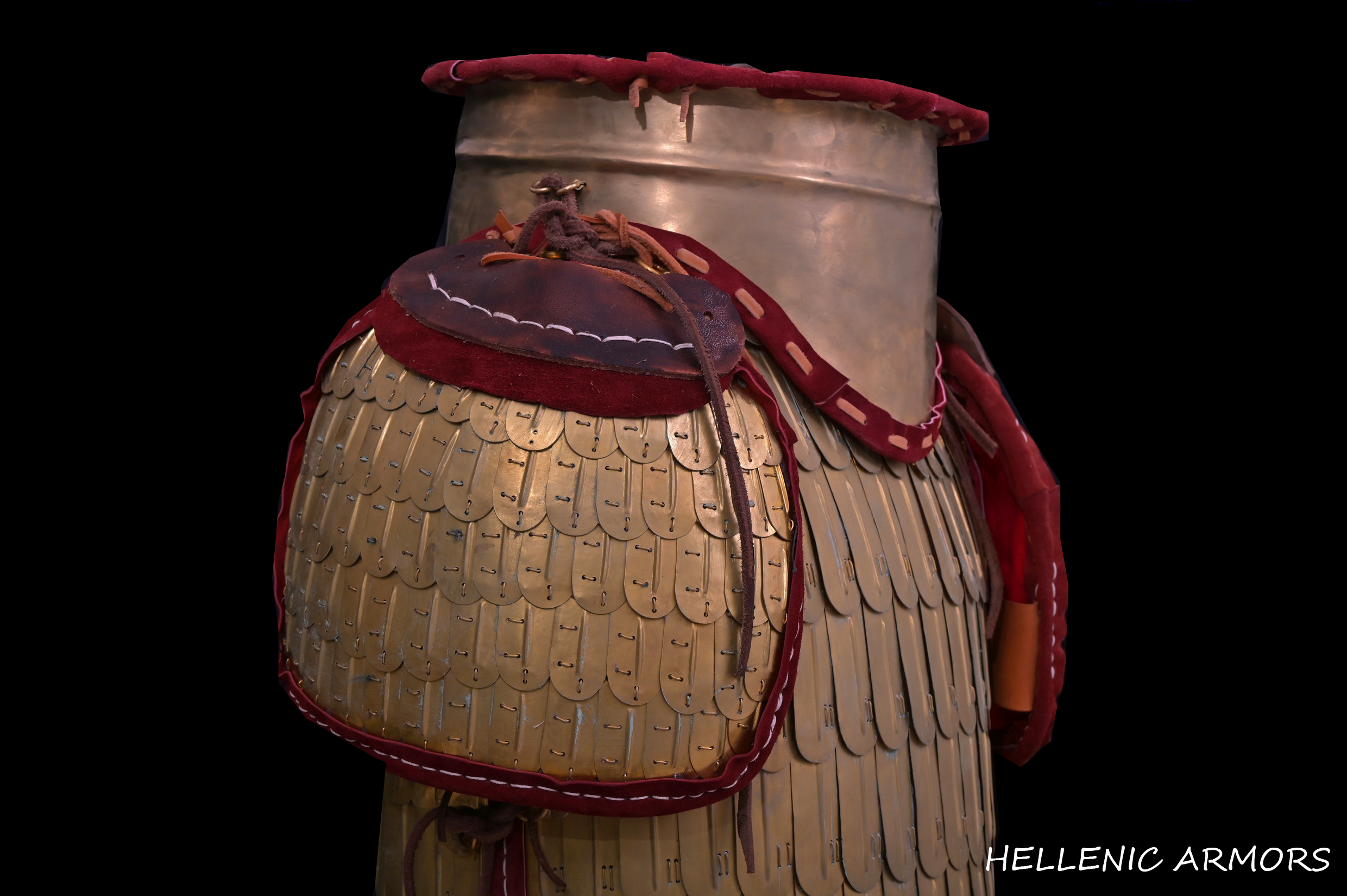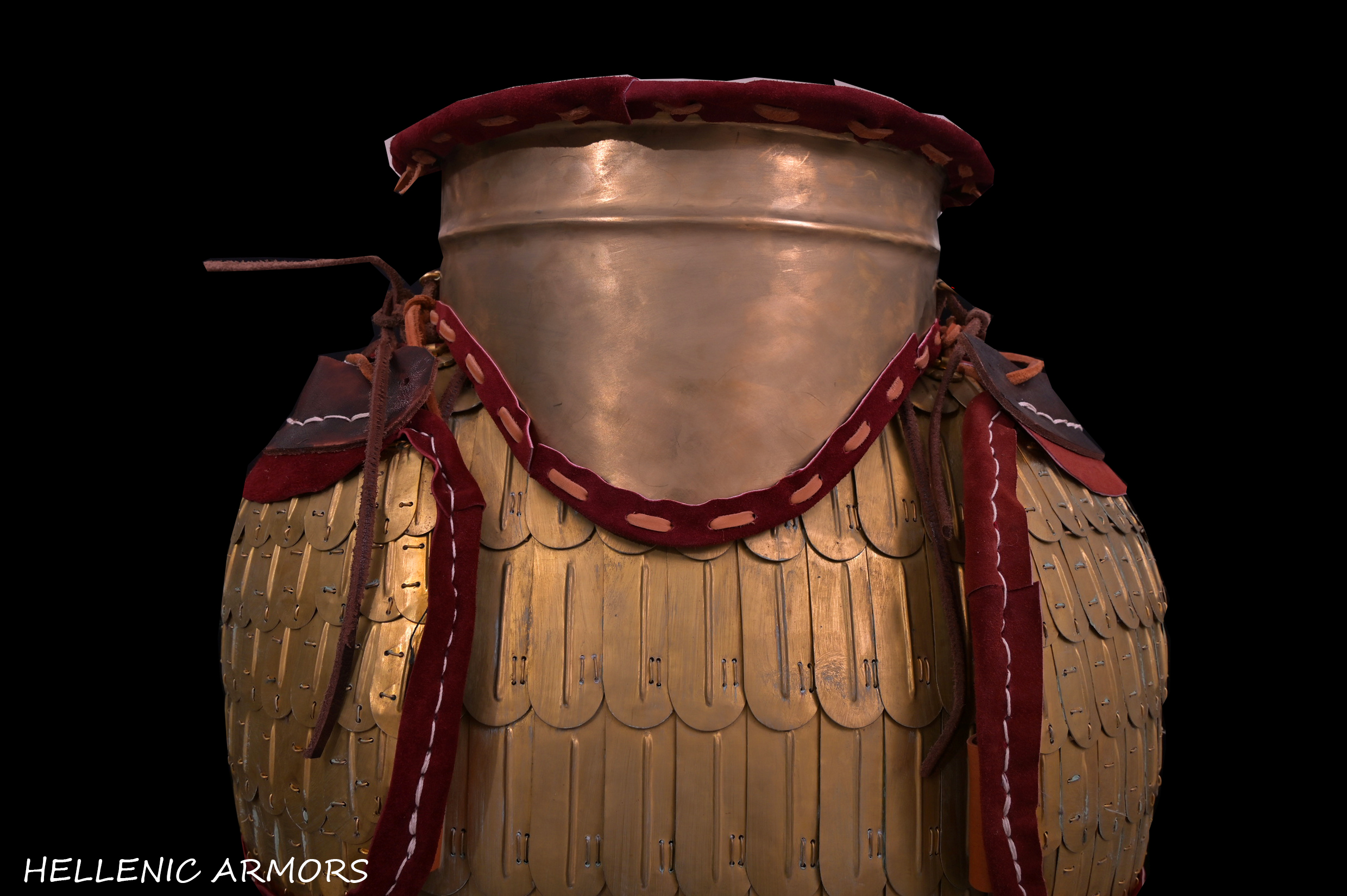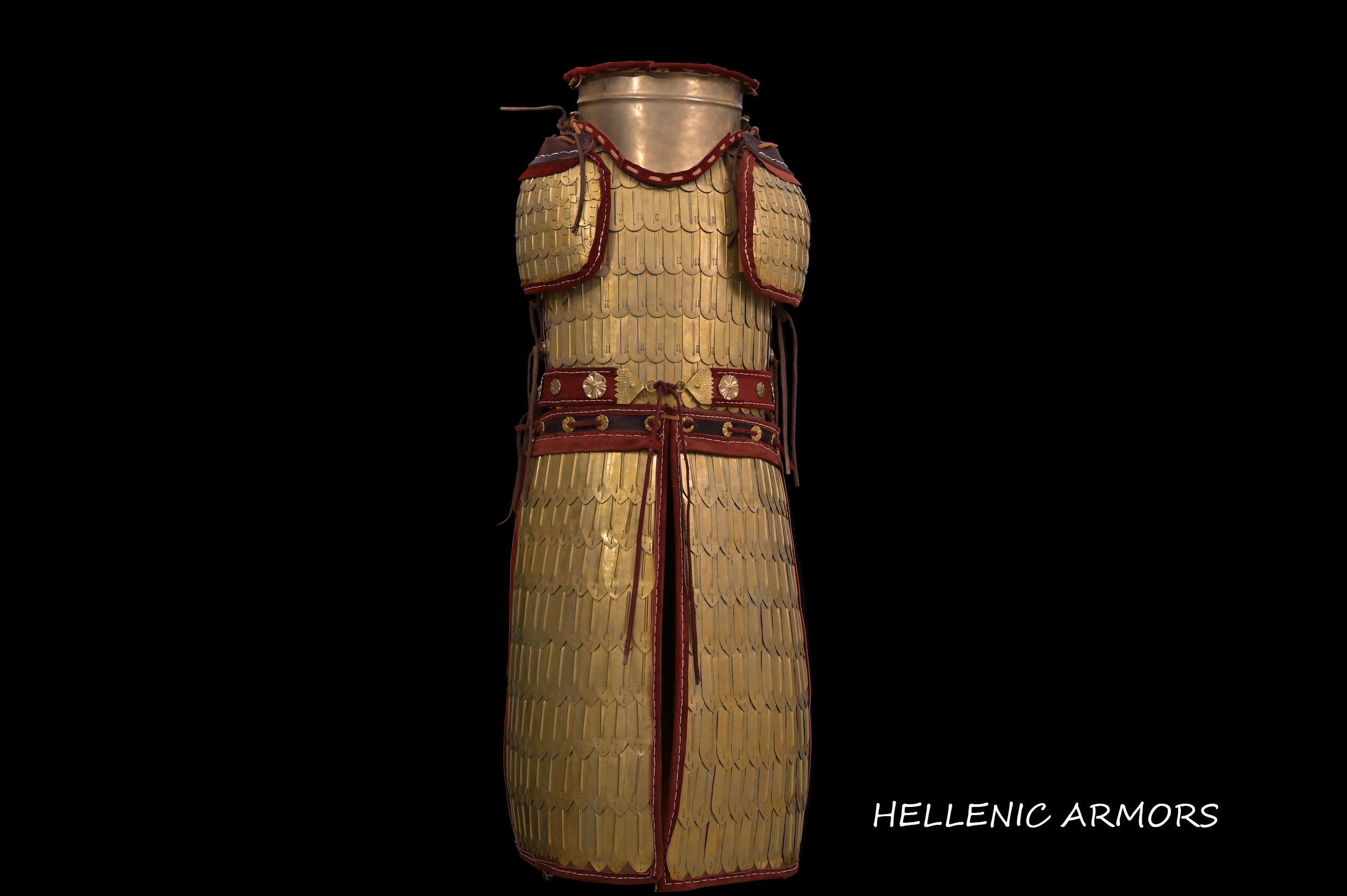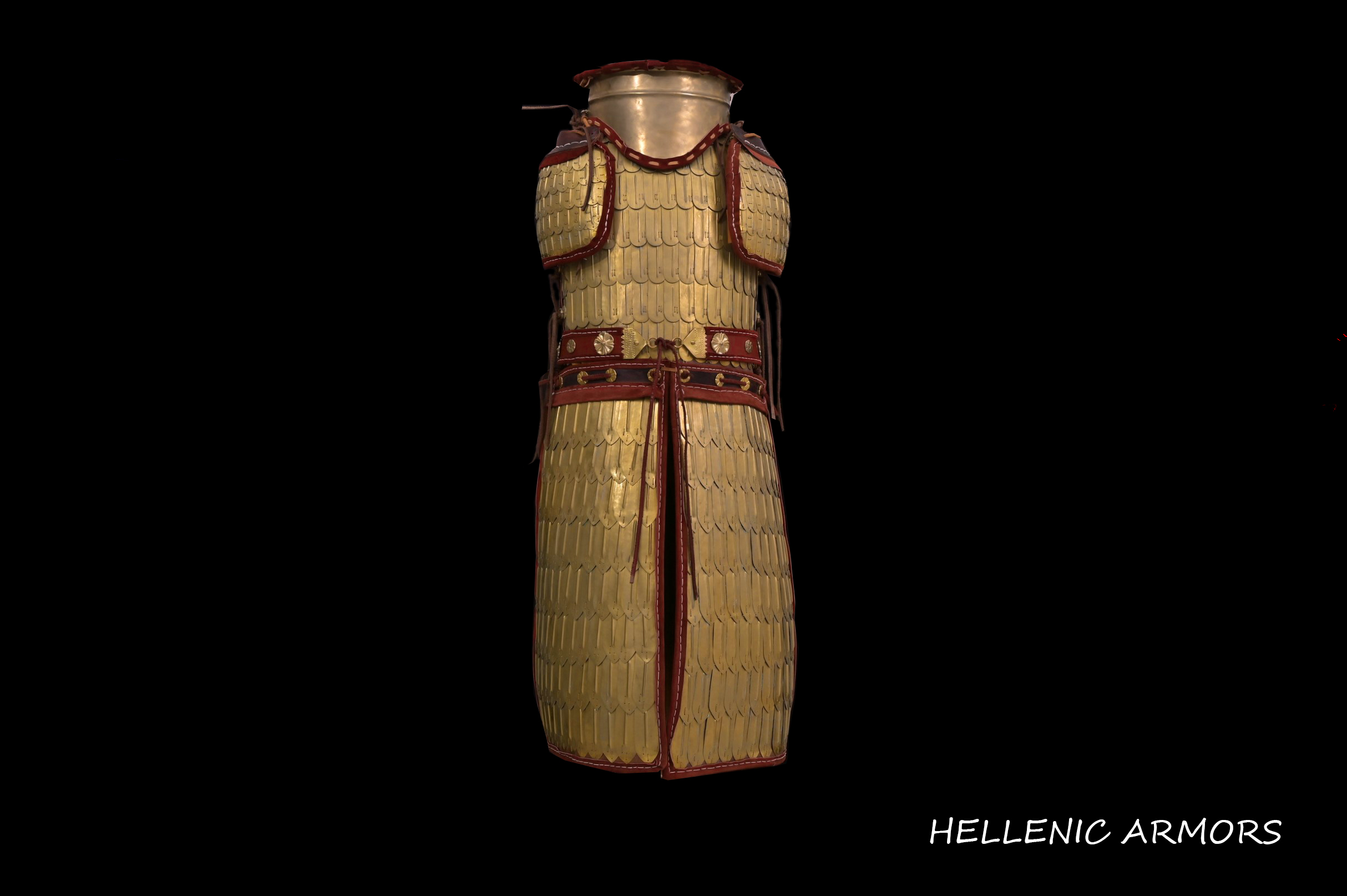Mycenaean Armor
Egyptian Scale Armor (Τhebes)
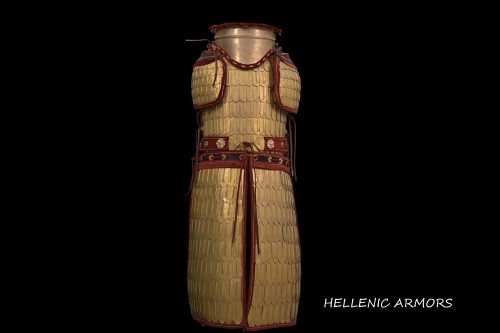
New Kingdom Egypt (14th-13th century BC).
The exhibit is based on a coloured wall painting armor from the tomb of the Egyptian official Qenamun which is located in the area of the Thebes’ necropolis (18th Dynasty, tomb TT93) who was the steward of Pharaoh Amenhotep II. The painting depicts a scaled armor covering the torso, shoulders and most of the lower limbs.
The overall shape of the scales are very similar to the bronze scale found in the “Kanakia” area of Salamis (Greek island near Attica,Greece) and bearing the royal seal of Pharaoh Ramses II. The main torso of the armor has been covered with this specific type of elongated bronze plaque while for the lower covering of the body has been selected a scale which was excavated in the palace of Amenhotep III (1390–1352 B.C.) At present day, this king of scale typology is being exhibited in the Metropolitan Museum of New York (Accession Number: 11.215.452j).
The area of the upper arms is also being covered with scaly pauldrons.The particular small scale has been found in Cyprus, in the area of Pyla – Kokkinokremos.The scale has been dated approximately at the same period as the rest of the analogous archaeological findings (13th -12th century BC).
All the scales are fixed with bronze wires to a leather and fabric substrate creating a uniform metallic surface of increased flexibility.The kit consists of two main parts (frond and dorsal) which are held together with rings- leather fastening arrangements. The shoulder guards are fastened to the main body with leather cords.
A very important element that the mural reveals is the depiction of a full metal “collar” around the neck, a fact that has no analogous anywhere else in Egyptian art regarding warfare. This very defensive gear is almost identical with the collar of the Mycenaean “Dendra Armor”, fabricated around 1450BC at Argos and today is being exhibited in the Archaeological Museum of Nafplion (Greece).
It is more likely that the depicted scaly breastplate belonged to an elite mercenary, since the Egyptian soldiers generally did not wear armor, with a few exceptions regarding the pharaohs’ defensive equipment. It would not be improbable that this very fresco depicts a well made thorax of a Mycenaean mercenary or bodyguard under the service of the Pharaohs of the period, as Achaean warriors were very popular for their martial virtues and effectiveness.New Kingdom Egypt (14th-13th century BC).
The exhibit is based on a coloured wall painting armor from the tomb of the Egyptian official Qenamun which is located in the area of the Thebes’ necropolis (18th Dynasty, tomb TT93) who was the steward of Pharaoh Amenhotep II. The painting depicts a scaled armor covering the torso, shoulders and most of the lower limbs.
The overall shape of the scales are very similar to the bronze scale found in the “Kanakia” area of Salamis (Greek island near Attica,Greece) and bearing the royal seal of Pharaoh Ramses II. The main torso of the armor has been covered with this specific type of elongated bronze plaque while for the lower covering of the body has been selected a scale which was excavated in the palace of Amenhotep III (1390–1352 B.C.) At present day, this king of scale typology is being exhibited in the Metropolitan Museum of New York (Accession Number: 11.215.452j).
The area of the upper arms is also being covered with scaly pauldrons.The particular small scale has been found in Cyprus, in the area of Pyla – Kokkinokremos.The scale has been dated approximately at the same period as the rest of the analogous archaeological findings (13th -12th century BC).
All the scales are fixed with bronze wires to a leather and fabric substrate creating a uniform metallic surface of increased flexibility.The kit consists of two main parts (frond and dorsal) which are held together with rings- leather fastening arrangements. The shoulder guards are fastened to the main body with leather cords.
A very important element that the mural reveals is the depiction of a full metal “collar” around the neck, a fact that has no analogous anywhere else in Egyptian art regarding warfare. This very defensive gear is almost identical with the collar of the Mycenaean “Dendra Armor”, fabricated around 1450BC at Argos and today is being exhibited in the Archaeological Museum of Nafplion (Greece).
It is more likely that the depicted scaly breastplate belonged to an elite mercenary, since the Egyptian soldiers generally did not wear armor, with a few exceptions regarding the pharaohs’ defensive equipment. It would not be improbable that this very fresco depicts a well made thorax of a Mycenaean mercenary or bodyguard under the service of the Pharaohs of the period, as Achaean warriors were very popular for their martial virtues and effectiveness.
